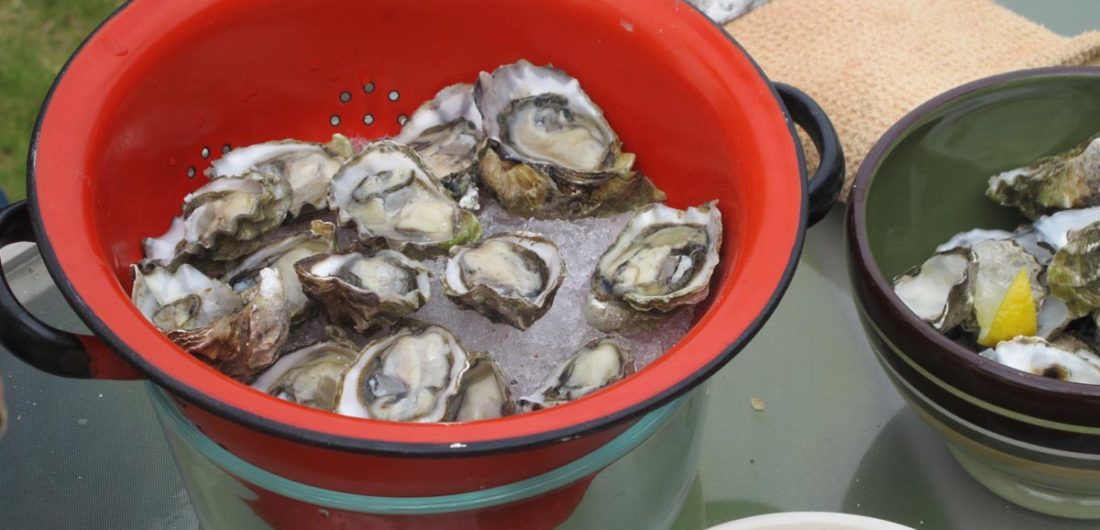Shellfish are said to be problematic in the summer months (May-August) for several reasons. The first is red tide, toxic algal blooms, and vibrio bacterial infections, which are most prevalent in warmer weather. However, commercially harvested shellfish are subject to regulations that shut down harvesting to eliminate such hazards.
Another problem is spawning. Oysters spawn in warm water (above 68 F for an Eastern oyster), and they lose much of their body mass to gamete production. This means the oyster doesn’t taste good, but eating one won’t hurt you. Many vendors avoid this problem by procuring shellfish from colder climates or areas with deep, cold water. Triploid oysters are another alternative, since they have been bred to be sterile and not spawn. Some farmers employ a state-of-the-art wet-storage system that continuously pumps sea water into tanks. When temperatures rise, the system chills the tank water to below 50 degrees, tricking the oysters into thinking it’s still winter. The tanks are also used for keeping a fresh supply of live oysters when winter storms and agricultural runoff require harvest closures.
Finally, storage and transportation in summer months used to result in faster spoilage, but with modern refrigeration techniques, you can be reassured that your shellfish have been kept at the proper temperatures.
The FDA does warn that some people are at greater risk for foodborne illness, including pregnant or nursing women, young children, the elderly, and people with compromised immune systems. If you fall into one of these groups, you should avoid eating raw or partially cooked shellfish.
Bottom line: Barring immune deficiencies or health issues, commercially harvested shellfish from restaurants and retailers is safe to eat year-round.
